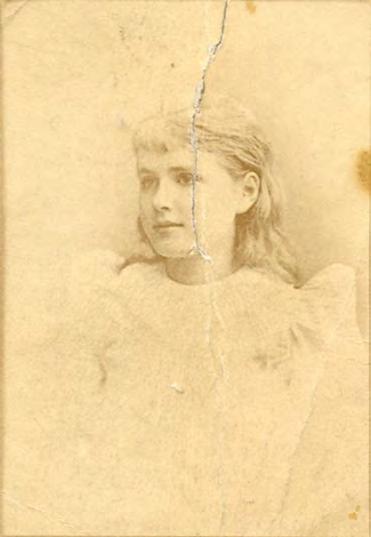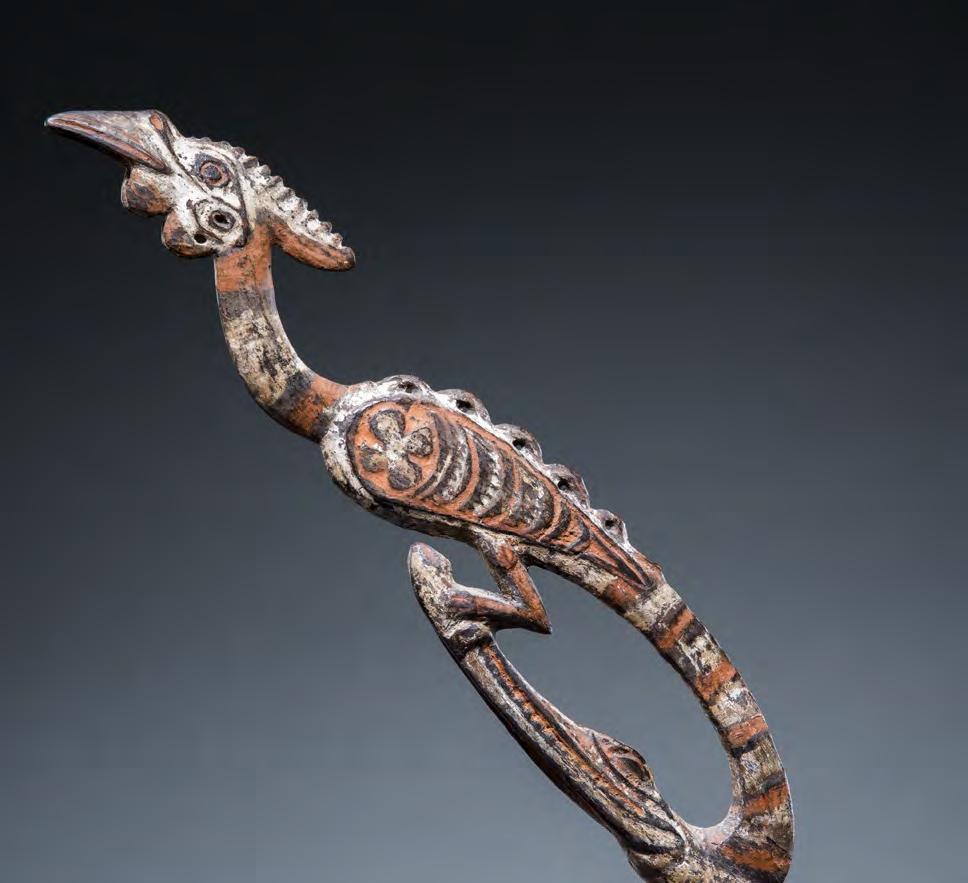
4 minute read
The 117-year-old Orphan—Bosher Massim Figure, Valentine Museum
By Michael Hamson
When a museum object loses the tether of its acquisition history, it is in danger of being cast off as undocumented property. Such is the case for the present Massim figure recently deaccessioned earlier this year by the Valentine Museum in Richmond, Virginia.
Advertisement
Fortunately, once I had the piece in hand, I noticed the remains of a lightly penciled inventory number on the figure’s back shoulders. This allowed the current museum’s staff to research its original accession. It turns out that the piece was donated in 1904 by a beautiful young woman with a sad history.
Ellie Bosher was considered the belle of Richmond, Virginia, when she and her family left on a trip around the world in 1901. Her father was a wealthy man, president of the large T.C. Williams tobacco company.1 The Massim figure was a gift to Ellie from one of her father’s business associates she met while in Australia.
Three years later in January 1904, Ellie was visiting a friend in New York City when she caught typhoid fever and had to be placed in a sanatorium.2 Her father, Robert S. Bosher, traveled to New York to be as close as possible to his daughter during her illness. While not allowed to visit Ellie due to her quarantine, he took up residence nearby. It was during this time, ten days after he arrived, that the cool weather took its toll on Robert Bosher, who first caught a cold and then pneumonia from which he died.
The name of Boscher’s business associate in Australia that originally gifted the figure to Ellie is not certain, though it quite possibly may have been Arthur Scheidel, a German businessman and collector who lived in Sydney and travelled extensively around the Pacific, purchasing
Ellie Bosher circa 1910, photo by F. J. Walsh
African Americans, mostly women, sorting tobacco at T. C. Williams & Company— Images collected by W.E.B. Du Bois & Thomas J. Calloway for the “American Negro” exhibit at the Paris Exposition of 1900

1 At the turn of the century, Atlanta University sociology professor W. E. B. Du Bois compiled a series of photographs for the “American Negro” exhibit at the 1900 Paris Exposition, and a number of them were taken at T. C. Williams tobacco company. 2 This was most likely Riverside Hospital on North Brother Island, next to Rikers Island prison in the East River, that was home to Typhoid Mary, who died there in 1938. 3 In all, Scheidel made three donations to the museum, in 1899, 1901, and 1904, totaling about 300 objects, including scientific specimens, all accompanied by handwritten inventories (in English).
objects from markets and dealers. There is a remarkably similar figure donated by Scheidel in 1898 to the Museum of Anthropology and Ethnology at the University of Florence.3
Likewise, illustrated in William Webster’s catalog no. 28 from 1901 is another closely comparable figure with similar treatment of the mouth, position of both arms, distinct loin cloth, and rudimentary feet, which raises the possibility of its having been made by the same hand as the Bosher sculpture.
While it is often a mistake to project a perceived emotional state onto a tribal sculpture, when one knows the heartbreaking history of this piece it would be hard not to attach some significance to its tearing eyes and apparent distress.
Group of New Guinea objects from W. D. Webster’s Illustrated Catalogue of Ethnographical Specimens, No. 28, 1901
Massim figure in the Museum of Anthropology and Ethnology at the University of Florence, collected by Arthur Scheidel in 1898

New Georgia, Solomon Islands John J. Klejman, New York Faith-Dorian and Martin Wright Collection, New York, acquired from above on 29 May 1968 Exhibited in The Art of the Pacific Islands, National Gallery of Art, Washington
DC, 1979 Published in The Art of the Pacific Islands, Peter Gathercole, Adrienne L.
Kaeppler, and Douglas Newton, Washington DC, 1979, p. 233, no. 15.18 Late 19th century 8 ½” (21.5 cm) in height
This Solomon Island canoe prow ornament is nearly unique in its facial structure. The common style has almost zoomorphic features with the lower portion of the face and jaw jutting well forward. The present prow is distinctly human in form with a more vertical composition that it shares with its distinguished counterpart from the de Havenon Collection illustrated by its side in The Art of the Pacific Islands exhibition catalog.


13 Iatmul Ceremonial Lime Container
Iatmul culture, Middle Sepik River, East Sepik Province, Papua New Guinea Jolika Collection of Marcia and John Friede Wayne Heathcote, London Irene Beard Collection, London Pre-contact, stone-carved, 19th century 291/8” (74 cm) in length
The best Sepik River art, in fact the best New Guinea art, combines elegance and refinement with an unquestionable archaic quality. As with this ceremonial lime container there is a harmony to the repetitive curves and a sophistication in the balance between solid and void spaces. Yet, the creatures themselves have an almost prehistoric feeling, the carved edges are worn smooth from age, and the pigments, often magical, are applied in thick layers. Hints of the dark, glossy patina show through where the pigments have worn away.











